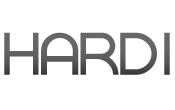Steel Products

HARDI: What If the President Pulls the Tariffs?
Written by Tim Triplett
May 15, 2018
Demand remains strong in the HVAC sector despite the high steel prices, but distributors share an uncomfortable feeling that the favorable conditions may not last. “Business is good, and prices are high, but they are going to fall. When is anyone’s guess. You just have to try to protect yourself and have the least amount of inventory on the floor when it happens,” said one member of the Heating, Air-conditioning and Refrigeration Distributors International (HARDI) during the trade group’s monthly conference call on Tuesday.
![]() The main source of concern for HARDI members is all the conflict on the trade front. “The biggest factor haunting the market is President Trump and the tariffs,” said one executive. “What will happen with Canada, Mexico and Europe? There is a lot of uncertainty in the market right now.” Added another: “The market fundamentals are not supporting the high steel prices, it’s the tariffs. If they are pulled, the price would drop instantly.”
The main source of concern for HARDI members is all the conflict on the trade front. “The biggest factor haunting the market is President Trump and the tariffs,” said one executive. “What will happen with Canada, Mexico and Europe? There is a lot of uncertainty in the market right now.” Added another: “The market fundamentals are not supporting the high steel prices, it’s the tariffs. If they are pulled, the price would drop instantly.”
The Section 232 tariffs of 25 percent that took effect June 1, and the debate leading up to them, have already affected steel imports into the United States, reported John Packard, publisher of Steel Market Update. Imports of galvanized steel used by the HVAC industry declined by 11 percent in the first five months of the year. May galvanized imports totaled about 257,000 tons and June is trending down around 242,000 tons, about 50,000 tons less than normal.
Domestic hot rolled prices are far in excess of foreign steel prices, Packard said, pointing to the current $686 per ton CRU price for hot rolled steel from Germany, $649 from Italy and $641 from the Far East. But add the Trump administration’s 25 percent tariff to those prices and the spread is no longer wide enough to make foreign steel attractive to most U.S. buyers.
With less competition from foreign imports, prices in the U.S. could be expected to rise. But there is a disconnect between hot rolled and galvanized pricing, said Packard. Hot rolled has increased, but galvanized has traded sideways. The average base price of galvanized steel is around $50/cwt ($1,000 a ton plus extras) today, while hot rolled is at $910. “My gut feel is that HR prices should be peaking soon,” Packard said.
He noted that the price of zinc has dropped to around $1.15 a pound from more than $1.60 earlier in the year, but he does not expect the mills to adjust their coating extras anytime soon. “One mill told SMU they would need to see this trend for a couple months before they would consider a change in prices,” he said.
All but one of the HARDI wholesalers reported strong demand in their section of the country. However, most of those jobs were quoted months, if not years, earlier. Prospects for 2019 are less certain. Other HARDI members reported concerns with accounts receivable and freight. Some customers are taking longer to pay as they feel the effects of the high steel prices. “Business is certainly good, but collections are extending a bit,” said one executive.
Freight has become a huge problem, reported another source. “I have seen a 30 percent increase in what flatbeds are charging. It’s not really justified by their costs, it’s just a matter of who is willing to pay the most. Even outbound freight has become a big issue,” he said, commenting on the industrywide driver shortage. Maintaining profitability is a challenge as transportation prices escalate, agreed another distributor. “We’re trying not to decrease our margins by covering freight.”
Steel Market Update participates in a monthly steel conference call hosted by HARDI. The call is dedicated to a better understanding of the galvanized steel market. The participants are HARDI member companies who are wholesalers, service centers and manufacturing companies that either buy or sell galvanized sheet products used in the HVAC industry.

Tim Triplett
Read more from Tim TriplettLatest in Steel Products

CRU: US rebar and wire rod prices rise alongside S232 increase
CRU Senior Steel Analyst Alexandra Anderson discusses current market and pricing dynamics for long steel products in the US.
CRU: Excessive global supply could hit rebar mill investments in US
Following the onset of the war in Ukraine in March 2022, concerns about import availability and expectations of rising demand from President Biden’s Infrastructure Bill pushed US rebar prices to record highs. In response, a flurry of new mills and capacity expansions were announced to meet the rise in demand from growth in the construction […]

Steel buyer spirits tempered by soft spot market conditions
Steel sheet buyers report feeling bogged down by the ongoing stresses of stagnant demand, news fatigue, tariff negotiations or implementation timelines, and persistent macroeconomic uncertainty.

CRU: US stainless prices to rise on expanded S232 tariffs
Stainless prices in the US market will rise, following price increases by major US producers. Our base case scenario incorporates higher US prices in the near term, despite the initial negative reaction by the market. US stainless prices will go up in 2025 H2 and will stay elevated in 2026 as tariffs on stainless […]

Galvanized steel demand unsteady amid lingering buyer fatigue: HARDI
Uneven demand for galvanized steel in June reflects a market that remains mired in uncertainty, according to industry sources.
